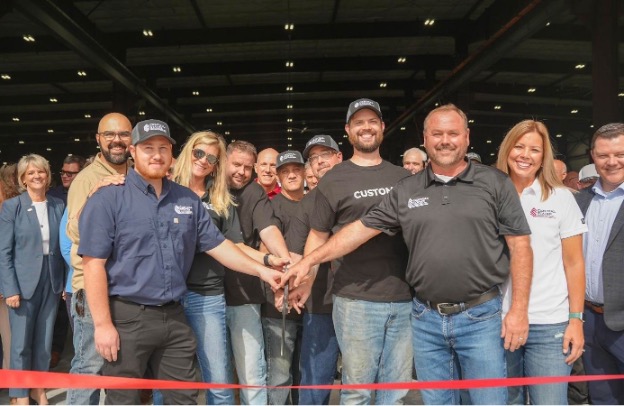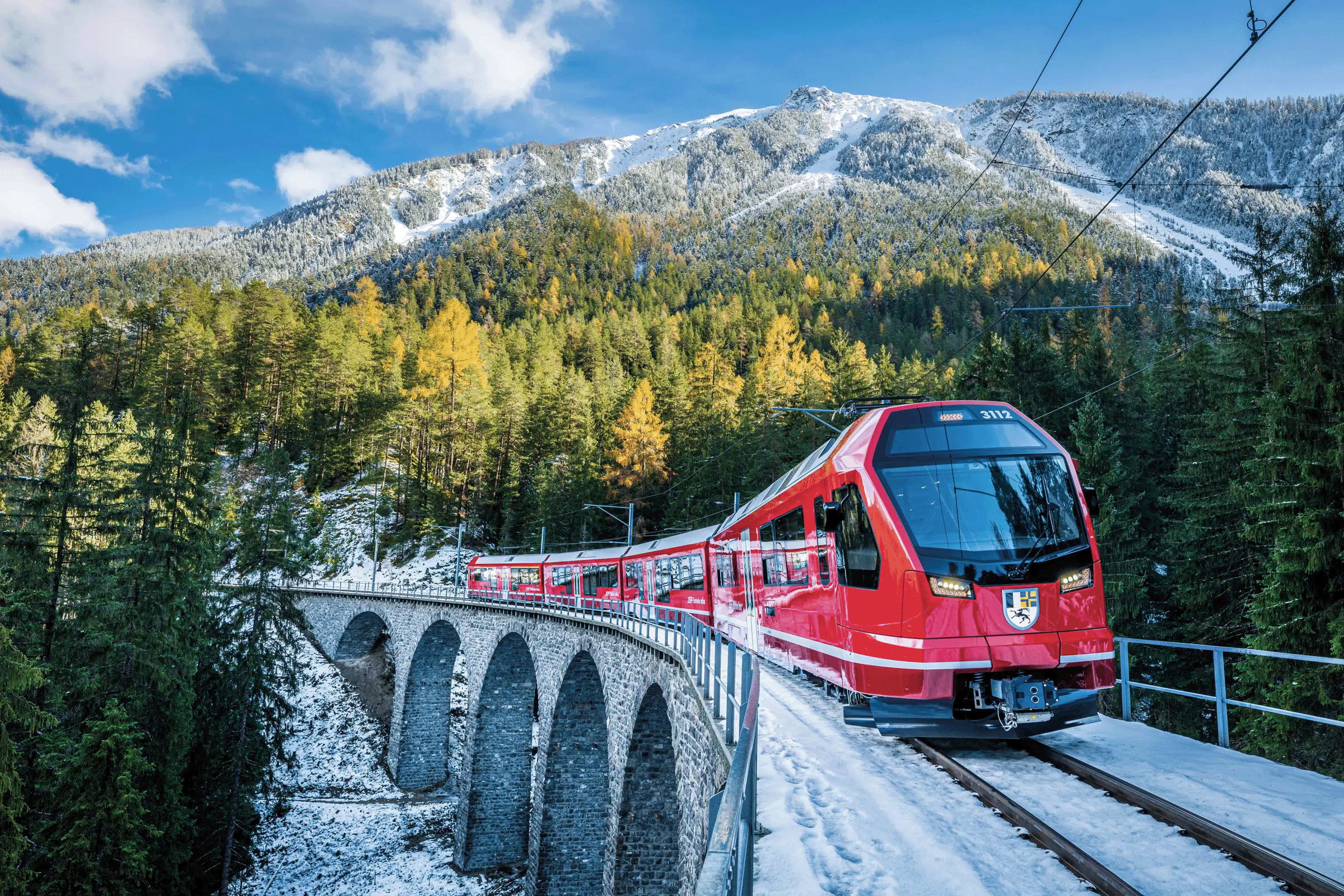How did Box Elder County Help the Nation with a Critical Pandemic Need?

December 9, 2020
We caught up with the Procter & Gamble (P&G) team to see “how they roll” during COVID.
More than a decade ago, Procter & Gamble (P&G) chose Bear River City as the location of its newest U.S. manufacturing site. The facility includes over 800 acres, with about 100 of those acres under roof. We caught up with Tommy Montoya, HR director, and Seth Garner, plant manager, to learn more about their operations, particularly under COVID protocols.
What types of product does P&G produce at the Box Elder facility?
SG: Currently we have Baby Care and Family Care product lines. Family includes Charmin toilet paper and Bounty paper towels. Baby Care includes Pampers and Luvs diapers.
When we first opened the plant in 2011, we focused on Charmin and Bounty. The second expansion got us into the diapers business.
TM: We also recently announced a third expansion, which will almost double the number of employees and significantly expand the size of the plant. This expansion will allow us to start producing feminine hygiene products. This will be the first plant for P&G globally which has all three of these business categories co-located.
So just how many rolls of TP does the plant produce in a day?
SG: A lot. We can’t go into specifics but it’s a lot. October set another record for volume across our product lines.
When the pandemic intensified in March, what was it like in your plant?
TM: We’re in a high capital business which makes it impractical to “just start up a new machine.” So with COVID the question became how do we optimize the product line? In the first weeks, it entailed a lot of learning, specifically on how we keep our people safe while also dramatically increasing output for what had become an extremely critical product. There were so many unknowns, we wanted to find the best information that was out there so we could keep our people safe, keep the business running, and simultaneously produce record volume to meet unprecedented demand. We’re a global company and we share operational learnings from all our plants. With that said, every plant is different; the principles are consistent but application is different by each site.
For example, we had one employee who was in a very high-risk category. We sent that employee home with pay for a few weeks while we put in place new safety measures. “Give us some time to figure this out” is what we told that worker.
While implementing wearing of masks and temperature checking and spacing, the challenge was balancing those protocols with our “all hands on deck, flow to the work” environment. We recognized that the work culture of flexibility could put us all at risk. We had to find the right ways to pivot our really good culture, where people from one production line jump to another that’s experiencing an issue, to conform to COVID safety measures.
At the same time we focused on making more of our most popular styles/sizes to reduce changeover time, and get more product out the door.
SG: Now months in, we’re approaching more balance on social distance vs. the “flow to the work” approach, especially now that we better understand that masks and other protocols are effective. We’ve made some evolutions since then and have moved to a more sustainable norm. For one thing, we reduced changeovers on the production line. We’ve been making more of one kind of product, vs. different kinds involving lots of time-consuming changeovers, so we can continue to push more product out the door.
TM: Another example – we took all of our first level, junior managers and assigned them to production teams because with social distancing, we couldn’t fill overtime slots. So these young managers worked days, nights, weekends to cover those slots. They put skin in the game – to keep the place safe and operational. They are now thankful for the time they had on the floor as they built relationships, learned more about the process, and earned “street cred.”
Today, it’s a marathon. We are all fighting complacency, so we’re reminding people why it’s important to follow protocols. It’s a matter of how we find the stamina and energy to stay consistent to the principles that we know are working. When the Governor issued his executive order, we reinforced with employees that we expect them to comply with the request.
What are you most proud of re: pandemic response?
SG: Through all the things that have changed – the precautions and procedures – the teams have responded and rallied behind the business needs. Our people have responded amazingly, wearing masks, changing the way they’ve done things for years, moving to different teams. And amidst all of that, they continue to hit record production levels.
We’ve heard all the jokes about being in the toilet paper business. But you got to admit, our people recognized they had a unique challenge – supplying TP to our western markets – and they rose to it.
TM: P&G has been sending masks and sanitizer home with employees. We’re also making masks in the plant for use by employees as well as donating them to schools and first responders in the local community.
Furthermore, we recognized that the early run on toilet paper was tough, and that seniors who were most vulnerable shouldn’t go to stores. We started delivering toilet paper to local senior centers so via their Meals on Wheels they could make sure seniors had access to product without having to go out.
What makes Box Elder County and Utah attractive to P&G?
TM: Years ago, when we were looking for where to build capacity for the family care product line, it came down to the skill and the talent that exists in the Box Elder area. The industriousness and the ownership that exists in Utah’s culture continues to come through here.
SG: Our country’s population growth is happening in the West and our products need to follow that. We also needed access to natural resources and supply chain. We’re really close to the “Crossroads of the West” – that combination of road/rail that helps getting supplies in and products out.
When we talk about natural resources, we’re water intensive in our manufacturing processes. The substantial water rights here were part of why we chose this site. But we recognize that water is a critical resource in Utah. We are proud that through the efforts of our local Utah talent, we have reduced our water consumption more than 50 percent since we started. Our managers and line staff spotted ways to conserve water without impacting product quality.
What trends are you seeing in consumer purchasing?
TM: Consumer spending continues to show some volatile trends. People are still buying more Charmin and Bounty, but that’s because they’re spending more time at home. Home toilet paper is higher quality than office toilet paper, so demand for our products is up.
As we look to the future, who knows? We know the product remains important, and we’re making the product as fast as we can, so the products are there when consumers need them.
As a recent transplant to Utah, what’s your favorite thing about living in Box Elder County?
SG: The Fruit stands! My wife has been having fun making all kinds of creative things with local fruit.
TM: We love the local vendors. We regularly use local food trucks to bring food to the plant. We just had one here for lunch today and they do a great job. We’ve been impressed with their ability to step up and meet COVID standards.
With net sales of $67.7 billion in 2019, P&G is the world’s largest company in the household products and personal care industry. It is currently ranked No. 146 on the Fortune Global 500 list. For more information, visit us.pg.com.






